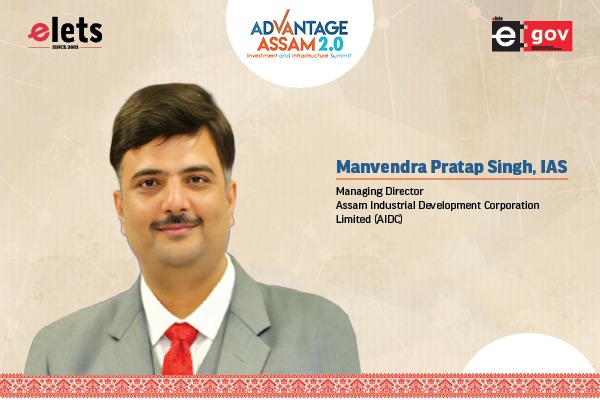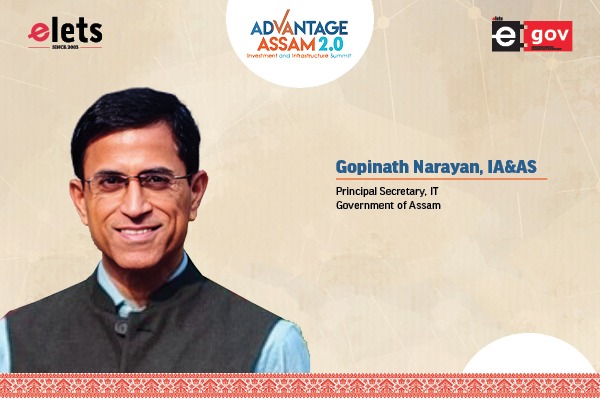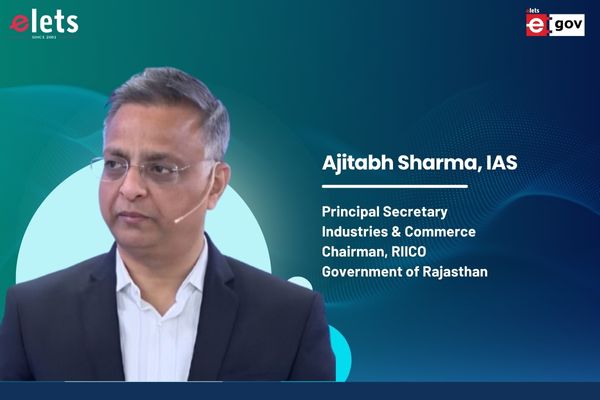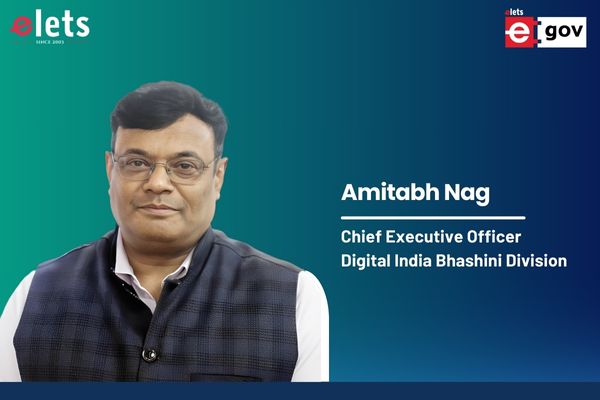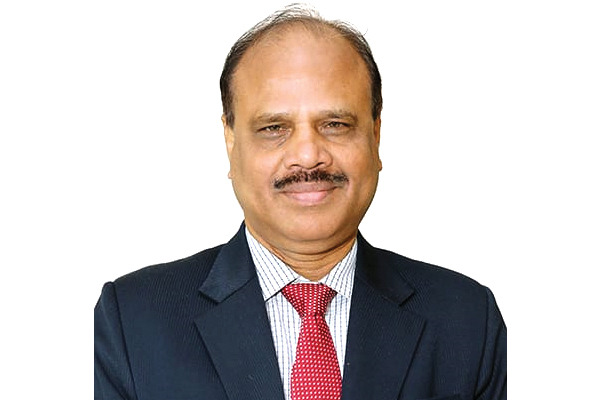
India, the seventh-largest country of the world having nine large river systems and gets 4000 billion cubic meters of precipitation (including snow) but it still struggles to cater to the water needs of its population. To shed light on India’s water crisis and mitigation efforts by the government, GC Pati, Chairman, Central Ground Water Board (CGWB) interacted in an exclusive interview with Nisha Samant Purbey and Adarsh Som of Elets News Network (ENN) for special issue of the eGov Magazine on Water.
- As quoted by an esteemed daily in November 2019, Gajendra Singh Shekhawat, Union Minister for Water Resources said 22 percent of groundwater has either dried up or in a critical state. What’s your take on this? How has the stats turned today?
Hon’ble Union Minister Gajendra Singh Shekhawat was referring to the Overexploited and Critical groundwater assessment units (AUs) which are the administrative units like blocks, talukas, mandals, firka, etc. wherein groundwater has been drawn excessively, leading to the steep decline of water levels, dwindling discharge of wells, quality deterioration as well as drying of shallow boring & dugwells. Overexploited AUs are those areas where the total annual groundwater extraction exceeds the total annual recharge to groundwater resource, whereas in Critical AUs extraction of water is about 90-100 percent of the total annual recharge and excessive extraction is not sustainable with the natural recharge. These areas need groundwater management interventions such as reducing demand and increasing recharge to aquifers through efforts of the government as well as communities. Groundwater needs to be extracted only up to a safe limit corresponding to annual recharge and there should be increased efforts for groundwater recharge to ensure sustainable groundwater management.

As per the latest assessment of dynamic groundwater resources of India-2017 done jointly by CGWB and respective State Ground Water Agency, the total annual groundwater recharge has been estimated as 432 Billion Cubic Meter (bcm) and the total annual groundwater extraction is 249bcm. Out of the 6881 Assessment Units (AUs) in the country, 1186 units (17%) falling in various states have been categorized as Over Exploited and 313 units(5%) areCritical. Thus nearly 22% of the AUs are groundwater stressed areas where efforts for water conservation and artificial recharge need to be aggressively implemented. Community participation is the key ingredient for the success of any mission, so our emphasis should also be to involve locals, the stakeholders at the grassroots level, in this movement through their awareness, motivation & capacity building.

- Sir, over 80-85 percent of the groundwater is consumed for agriculture. Do you think farmers need to rethink what they are growing?
Groundwater draft for irrigation is about 221 bcm which is about 89 percent of the total groundwater extracted annually in India. Though food security is of foremost importance, its detrimental impact on water levels needs to be constantly watched and accordingly measures are needed for micro-irrigation and crop diversification.

For instance, rice crop needs approximately 10 mm of water per day. Therefore a crop that matures in 100 days requires approximately 1000 mm of water. There is a good market for rice, wheat and sugarcane which consumes a high quantity of water. Growing alternative crops such as maize, mustard, soybean, oilseeds and cotton in a reasonably large area are expected to reduce water consumption and can help to revive the water table. CGWB is creating awareness amongst farmers through public interaction programs on water budgeting and also sharing aquifer management plans to prepared under its National Aquifer Mapping Program with the respective state government suggesting demand and supply-side interventions needed to revive the groundwater repository.

Crop diversification in the country is not a new practice being advocated. It was being practised in the form of increased areas under commercial crops including vegetables and fruits since independence. However, this needs momentum by providing good basic infrastructure of post-harvest technologies and necessary marketing facility for the diversified. “SahiFasal campaign” launched by the Ministry of Jal Shakti in November 2019 is to nudge farmers in water-stressed areas to grow crops which use low water and are economically remunerative, nutritious as well as suitable to the agro-climatic characteristics of the area.
Further, recently, the Government of Haryana also under its ‘Jal Hi Jeevan Hai Scheme’, is giving incentives of Rs 2000 per acre to shift to maize or soybean cultivation from water-guzzling paddy cultivation. The effective implementation of ‘Atal Bhujal Yojana’, involving farmers in sustainable groundwater management in 78 identified water-stressed districts of seven states will also bring improvement in groundwater regime.
Also Read: Mending Demand & Supply Side Management to Curb Water Crisis : U. P. SINGH
- What irrigation methods is the government looking forward to introducing to reduce groundwater usage?
Conjunctive use of surface and groundwater in irrigation can reduce the stress on groundwater. However, drip and sprinkler irrigation save lots of water so the government is propagating the same as per the feasibility of the area. The new variety of crop seeds are also being introduced which need less water and time to produce the crop. Full utilization of the created irrigation facilities and better design and proper operation and maintenance also considerably help in improving efficiency and reduce wastage. Promotion to use treated wastewater as an alternative source of water in irrigation can considerably reduce the usage of groundwater.
- Boring depths have deepened as the groundwater level falls in Punjab, a state blessed with loads of surface water and huge open greens to allow rain to penetrate through. Where are we lacking?
Punjab is an agriculture dominant state with more than 80 percent of land under agriculture as compared to the national average of about 40 percent, with very high average cropping intensity. It occupies only 1.53 percent geographical area of the country whereas it produces 37.83 percent of wheat and 25.57 percent of rice (2018-19) of the country. In the elevated alluvial areas of central Punjab where coverage of irrigation canals is less extensive than in the lower plains, many industrious farmers adopted the methods for growing crops through groundwater irrigation though the water table is deeper. The farmers resorted to water-intensive crops since it was supported by assured minimum price and well developed public procurement system. Having the advantage of control over the timing and amount of withdrawal in the hands of the farmer, groundwater irrigation always remained preferable to canal irrigation. Further, indiscriminate groundwater pumpage due to subsidised to almost free electricity coupled with flood irrigation, water guzzler agricultural practices & excessive dependence on groundwater sources have led to a situation wherein groundwater resources have depleted in most parts of the state. As per National Compilation on Dynamic Ground Water Resources of India, 2017, the stage of groundwater extraction in Punjab state is 166 percent. 80 percent of the groundwater assessment units are either ‘Over-Exploited’ or ‘Critical’ with irrigation accounting for about 97 percent of annual groundwater extraction in the state.
Awareness of public on irrigation practices as well as policy change towards free electricity to agriculture, availability of canal water for conjunctive use of water for irrigation and campaign to motivate farmers for crop diversification is lacking. The overexploitation of groundwater in Punjab requires a more focused approach for effective policy intervention. A combination of regulatory, economic, and institutional approach with a focus on the efficiency of water use in irrigation is the most needed change to be brought in. Under the national aquifer mapping programme, CGWB has shared district groundwater management plans with the state which shall be considered for suitable implementation. Increase in awareness of the farmer community towards the importance of water-saving & participation in the form of Water User committees/association, wherein they can chalk out the water budget vs selection of crops in their areas with the help of local experts can prove helpful in the sustainable management of groundwater.
- As the monsoon is set to wet the nation, what are the measures taken by the Department to recharge groundwater and fill up aquifers?
The Board is implementing the aquifer mapping & management program with the objective of demystification of the scientific knowledge of groundwater & aquifers for the stakeholders so that they can understand the groundwater resource availability and its sustainable management. Under the program, the Board is preparing aquifer disposition, the health of the aquifers and management plan for sustainable groundwater development through suggested demand & supply-side interventions. Supply-side interventions are focused on managed aquifer recharge, rooftop rainwater harvesting, water conservation in tanks, percolation tanks, check dams etc. These reports are being shared with states and also available on the website of CGWB. Artificial recharge structures are constructed in a cluster in the watershed in three aspirational districts of Andhra Pradesh, Telangana and Maharashtra state in coordination with state agencies so that similar structures can be replicated by them in neighbouring areas. Water level monitoring pre & post–construction is being continued so that impact of recharge on water levels, crop production and surroundings can be assessed. The Board is also providing technical assistance in rainwater harvesting and recharge to the army, govt. institutions etc on request. Recently, Rain Centre for awareness of local children and the public has been made in offices of the Board.

- What are the challenges you face when it comes to improving the groundwater situation in the country?
Groundwater accounts for about 60 percent irrigation needs, about 85 percent of rural drinking & domestic water, and nearly 50 percent of urban water needs. There are many challenges in the management of groundwater resources as the majority of the groundwater structures are private &extraction of groundwater is difficult to regulate. Stakeholders extract groundwater as per their will and as water demands are increasing manifold, it is leading simultaneously to set of challenges such as over-exploitation of aquifers, drying up of Shallow Wells, deterioration in water quality, salinity ingress in inland & coastal areas, decrease in base flow in small rivers, increased energy consumption for groundwater extraction due to lowering of water table& also increase of CO2 emission footprints due to electric & diesel pump sets.
Also Read: Quenching Thirst of Millions: DJB managing Delhi’s Water Demands
There is inadequate community involvement in improving groundwater situation. The crucial concerns for improving groundwater scenario are sustainable management of groundwater through water-saving cropping practices and strengthening of ground Water institutions. There are almost negligible efforts so far towards demand-side water management. Implementation of demand-side interventions through imparting extensive education to stakeholders in water budgeting can reap positive impact on stressed groundwater regime areas. Further, knowledge creation of farmers on area-specific low water needing crops &creation of local market support, promotion of drip/sprinkler for efficient irrigation, regulation for subsidized electricity, recycle & reuse of water in urban & industrial sectors etc need to be implemented on large scale for improving groundwater situation.
To overcome the situation, supply-side strategic interventions such as extensive recharge to augment groundwater sources through rehabilitation of traditional water bodies, construction of Percolation tanks, Check dams, Farm Ponds & preservation of natural forests are to be extensively adopted. To overcome these challenges, the National Aquifer Mapping and Management Programme (NAQUIM) is being implemented to delineate and characterize the aquifers for developing groundwater management plans. Further, accessibility of water information to strengthen the capacity of water resource management institutions is being done under the National Hydrology Project. Master Plan for artificial recharge to groundwater in the country is being revised which will give insight to the state agencies to take up recharge implementation in hydro-geomorphologically feasible settings in priority areas.
- Can abandoned quarries with no radioactivity or any harmful substances be used as reservoirs for rainwater and a medium for recharging groundwater?
It is true that abandoned quarries can be utilised for conserving runoff during rain or recharging surplus available water including treated wastewater of tertiary standard. However, it should be ensured through a proper study that there won’t be any geogenic contaminant or anthropogenic filling in abandoned quarries. Such projects shall be implemented under the complete guidance of experts with detailed pre-project studies indicating precautions to be taken during the life of the project.
- The Ministry of Jal Shakti is planning a project to interlink rivers to resolve India’s water woes. How is this helpful to raise back the groundwater levels and take the country out of water crisis?
NWDA has identified 30 links (16 under Peninsular Component & 14 under Himalayan Component) for preparation of Feasibility Reports. Field surveys & investigations are under progress and some feasibility reports are already completed. As assessed, the implementation of National Perspective Plan would give benefits of 35 million hectares of irrigation (25 million ha from surface waters and 10 million ha by increased use of groundwaters), raising the ultimate irrigation potential from 140 million ha to 175 million ha and generation of 34000 Megawatt of hydropower, apart from the incidental benefits of flood control, navigation, water supply, fisheries, salinity and pollution control etc. Implementation of the plan will definitely reduce the area-specific water stress, as some basins have less water and others have surplus water. Inter-basin water transfer will definitely increase the availability of surface water & reduce stress on groundwater to raise its water level to a shallow depth. As the irrigation through canals will increase, the water will be available for the farmers in the tail-end areas of the command also and the dependency of groundwater withdrawal for irrigation in such areas may reduce leading to improved water levels. Further, the availability of the water in the rivers will increase the base flow & contribute to the groundwater regime. However, water demands with growing population may further rise& if not managed by adopting water-saving practices by all sectors, groundwater may remain in critical levels in certain areas. Cautions are also required to monitor that inter-basin shifting of water shall not cause ground water logging condition in some areas of the basin.
- In addition to mandating rainwater harvesting, what other methods can be implemented in metro cities like Delhi, Mumbai to improve their groundwater levels?
With a growing population, there is a tremendous increase in water demands in urban areas and with this reliance on groundwater has increased manifold. One of the initiatives taken by the government is doing rooftop rainwater harvesting mandatory for buildings having roof area more than 100sq meter. However, its implementation shall also to be monitored. To improve the groundwater levels, the foremost management intervention is reducing the demand of water. There should be a dual water supply system so that treated water can be utilised for uses other than for drinking. Bath & kitchen fixtures, washing machines etc are to be, mandatorily, of water-saving standard, so that wastage of water can be reduced. Similarly, water demands for horticulture, infrastructural and industrial needs must be managed through treated wastewater or nearby surface water sources. Urban areas should also implement managed aquifer recharge depending upon the availability of surplus rainwater during monsoon for recharge. Lakes and traditional water bodies should be rejuvenated, augmented and protected.
Be a part of Elets Collaborative Initiatives. Join Us for Upcoming Events and explore business opportunities. Like us on Facebook , connect with us on LinkedIn and follow us on Twitter, Instagram.
"Exciting news! Elets technomedia is now on WhatsApp Channels Subscribe today by clicking the link and stay updated with the latest insights!" Click here!




